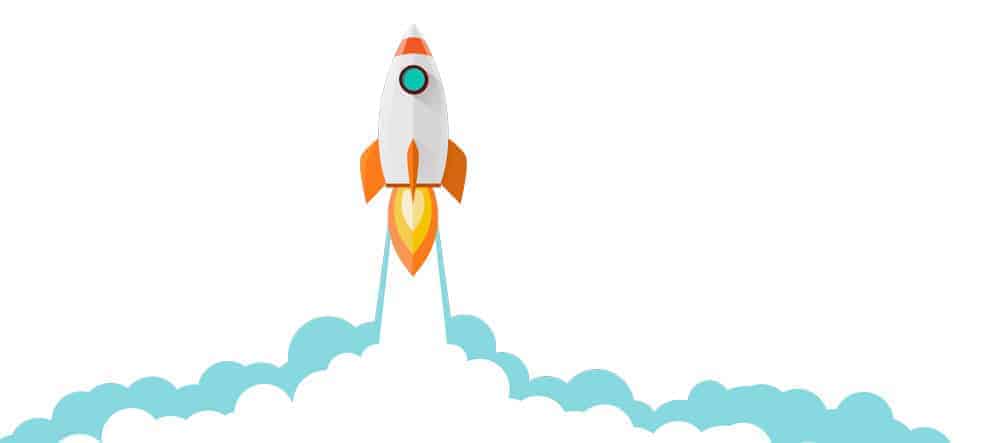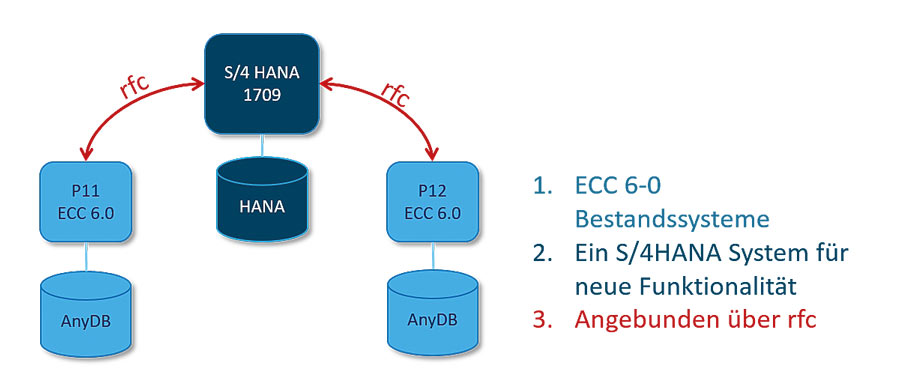The S/4 Booster Methodology


SAP managers often find themselves in a dilemma: Converting the existing ERP system to S/4 Hana (brownfield approach) is often not easily possible in the short term, as the modernizations in S/4 Hana require an extensive project involving the business departments and key users.
However, a new implementation of S/4 Hana (greenfield approach) requires an even more extensive project to first create a business blueprint and then decide which business processes will be mapped in the system and how.
On the other hand, it is desirable to let the business department benefit from the advances in the S/4 Hana system in the near future: In addition to the improved functionalities, the paradigm shift from the transaction-oriented SAP GUI to the modern Fiori interface with workflow elements, lists, deadline monitoring and also transactions is highly attractive for many users.
This is not only for functional reasons, but also to provide employees with a visually attractive interface for the ERP that fits in with the younger generation's world of work and experience.
With the Alegri Booster methodology, this dilemma can be elegantly and cleverly circumvented: The business department is provided with state-of-the-art functionality with an attractive interface at short notice - for the existing and familiar business processes of the existing ERP system with its own real data. This happens without a conversion project and without a time-consuming conversion of the system.
Push becomes pull project
Strategically, this approach is extremely clever: Instead of having to advertise throughout the entire company for an often costly changeover to S/4 Hana in order to obtain budget and staff capacity, it is possible to show in the short term with little effort what the future will look like.
This means that the business case can already be gone through concretely for a department. In this way, a "push" project that first has to be "pushed through" internally can become a "pull" project in which specialist departments "pull" - and also have their own interest in supporting the project.
This drives the digital transformation initiated with S/4 Hana and thus helps the company to initiate the necessary changes early on and with good ERP support.
After all, the use of modern interfaces on mobile devices of different origins and sizes is an aspect of employee retention and the perception of internal IT as a driver of modernization that should not be underestimated.
How did Alegri implement this booster methodology?
A current S/4 system is placed in front of existing ECC 6.0 systems, like a kind of proxy. Selected functionalities, for example of purchasing, are extended by in-house developments so that the required data is loaded selectively from the corresponding tables of an existing ECC 6.0 system.
This is done in the pull principle, so that the existing systems can continue to be operated unaffected and unchanged; no changeover in the core system is necessary!
This connection can be carried out via RFC (Remote Function Call), but also other interfaces such as OData or IDocs, in order to keep the intervention in the existing systems as low as possible.
Technically, this booster system can be realized in various ways: through another system on-premise or also through a system in an IaaS solution such as Microsoft Azure.
Since the existing ECC 6.0 systems continue to be used in full and the S/4 Hana system is only provided with the essential data for the modernized functionalities, this booster system is very lean.
Use in an IaaS cloud offers the further advantage that a trial of the methodology can also be carried out with copies of the existing systems without the need for hardware investment.
This means that a project launch can be approached at short notice and risk-free with minimal investment, and subsequent use of the booster methodology can also be carried out in "pay as you go" mode.
Cockpits based on Fiori 2.0
Now, modernized functions such as central inventory management or cross-plant material requirements planning (MRP) can be used.
Likewise, Fiori 2.0 lets you create user-specific cockpits that display list items, missed deadlines, evaluations, and transactions at a glance - all with a reddot award-winning design.
This allows the department to already gain experience and adjust to improved functionalities and role-based interfaces: with their own data, with their own functionalities - something a demo system cannot do.
Alegri has developed the Procurement Booster methodology as a first step for purchasing. In every production system (one/multiple ERP, SRM and APO systems, decentralized 3rd party solutions) there are procurement functionalities.
These are quite well delimited and therefore have few interfaces to other modules in the ERP system. These can be optimized by synchronizing the necessary data to a central system on S/4 Hana. For this purpose, the company's own real data is used and then the following improvements can be advised.

In procurement for cost centers
- Possibility to support the release processes with modern interfaces, e.g. with standard Fiori apps for releases
- Central shopping cards for office and IT materials, e.g. PCs, monitors, printers, toners, licenses
- Fast supply of the departments with low handling costs
- Few, but intensive and cost-optimized supplier relationships
- Possibility to have warehouses managed by suppliers
- For raw materials and components: lower inventory risk with faster availability of components
- Purchasing optimized for batch size and thus cost advantages
- Inventory overview and thus shortened delivery times
- significantly lower handling costs in purchasing
- Use of SCM functionalities (formerly APO) to optimize processes across plants
Not to be underestimated is the increase in productivity through the use of self-assembled cockpits, in which a wide variety of information is condensed into a role-based and task-oriented display.
For example, less complex processes can be completed on the subway, and the required analyses are already available in aggregated form for strategic decisions.
The adaptation to new devices, further development of the functionality and maintenance of these interfaces is carried out by SAP, i.e. the end user benefits from this on an ongoing basis as part of the usual software maintenance.
Another aspect of the switch to S/4 Hana is the conversion to business partners as a replacement for the classic debtor and creditor. The Alegri Booster methodology also lends itself to this:
This allows a central S/4 Hana system to be set up at an early stage, which manages the central business partner and connects the existing ECC 6.0 systems as satellite systems.
Now the advantages of the central business partner can already be used, such as workflow-based new creation with integrated, high-performance duplicate check of business partners and a central uniform interface for 3rd party tools such as an embargo check.
With this approach, Alegri demonstrates creativity in the efficient implementation of selected functionalities even before a comprehensive system transformation.
This is also honored by ISG, among others, with the "Rising Star Hana Services" award for 2018, highlighting Alegri's expertise and experience in the transition to Hana and S/4 in both the technical and application areas.
Alegri sees itself as a partner of IT and the CIO in the upcoming modernization of ERP and user interface on the way to an integration of business and IT. Thus, the prerequisites are created to act as a partner and catalyst of the digital transformation.
Together with the business side, the potential and possibilities of new technologies can be examined and transferred to new, previously undreamed-of business processes. Creativity and the freedom to think, act and implement "out of the box" are required here.






